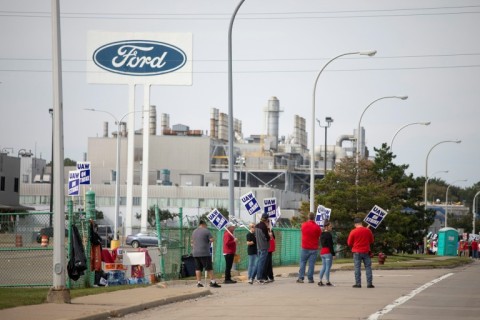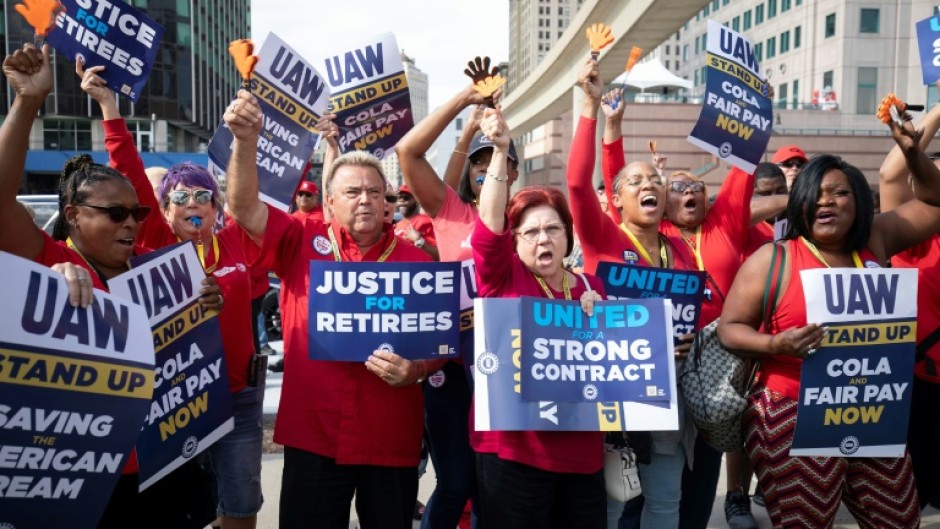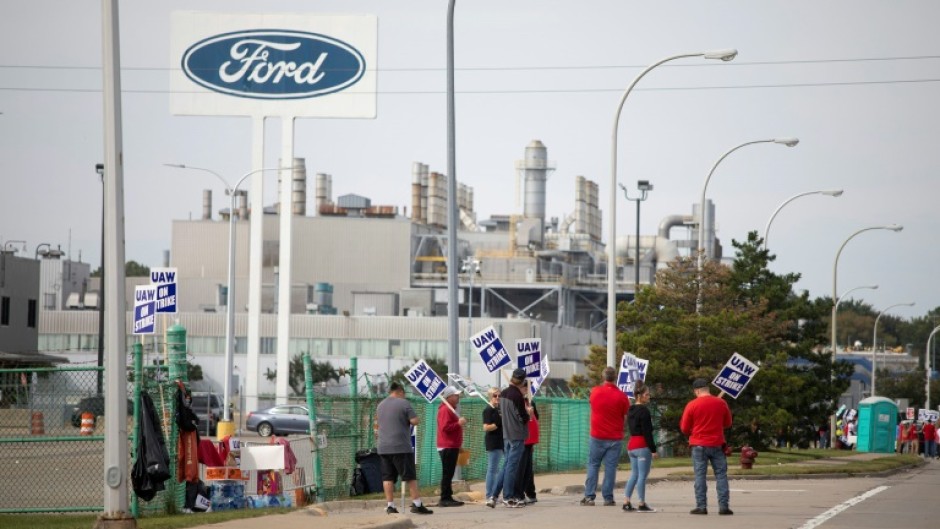Uncertainty will be the most powerful weapon wielded by US auto workers, industry watchers said as the first ever simultaneous strike by Detroit's "Big Three" looks set for the long haul.
Negotiations continued Monday, the fourth day of the United Auto Workers' strike of Ford, General Motors and Jeep maker Stellantis employees, with public statements on both sides indicating they remain far apart.
Late Monday, the UAW set a Friday deadline for the companies to make significant headway on talks.
"If we don't make serious progress by noon on Friday, September 22nd, more locals will be called on to Stand Up and join the strike," said UAW President Shawn Fain.
Fain had told MSNBC Monday morning that the two sides remained "far apart."
Industry watchers have said the strike could drag on for weeks or more, in part because the costs to both sides thus far have been limited.
Rather than completely shutter production at one or all of the Big Three, the UAW launched a limited strike, taking down just one plant at each company.
The targeted strike tactic "doesn't put as much immediate pressure on any one company, but it creates uncertainty," said Harry Katz, a professor at Cornell's School of Industrial and Labor Relations, who thinks the stoppage could go six or eight weeks or longer.
The three plants taken down produce midsized pickup trucks that are profitable, but not the biggest cash cows, meaning the dramatic action has not inflicted maximum pain on company profitability -- yet.
"The union has given themselves the ability to escalate and hit facilities that are even more harmful," said Michelle Kaminski, a professor at Michigan State University who specializes in labor relations.
The lost sales will result in an impact of between $41 million and $64 million in weekly operating profits, according to a note from Deutsche Bank.
From the union's standpoint, the three plants employ about 12,700 workers, fewer than 10 percent of UAW auto workers nationwide.
That limits the hit to UAW's $825 million strike fund, set to drop an estimated $6.5 million per week, said the Deutsche note.
"These headwinds seem very manageable for now, reflecting the UAW's strategy not to paralyze immediately the broader production process, but rather to inject (a) high level of uncertainty into strike magnitude ... to put growing pressure, depending on how the negotiations are progressing," said the Deutsche Bank note.
Labor historian Nelson Lichtenstein expects the UAW to perhaps add plants on a weekly basis as long as there is no deal.
"The threat is the next target," Lichtenstein said, who thought the strike could last at least a month.
- Payrise push -
The UAW is seeking 40 percent wage hikes that would match the increases enjoyed by auto CEOs over the last four years.
Other key demands include an elimination of different worker pay and benefit "tiers"; a cost-of-living adjustment; and the reestablishment of retiree medical benefits.

In the past, the UAW has picked a lead company to target for a strike, then used the eventual contract as a pattern for the other companies.
This time round, they have broken with that tradition by striking at all three -- though labor experts still expect the union to seek to use the first deal reached to be used as a template on terms such as wages.
Analysts at Cox Automotive have said GM sales are "likely more vulnerable" because of brisk sales at dealership, especially compared with Stellantis, which has much loftier supply because of "weak" sales, while Ford is "in-between" the other two companies.
GM has previously said that its inventory of new and popular vehicles is at about 10 days, though it hopes to increase that by the end of the year.
By John Biers


